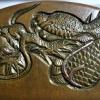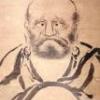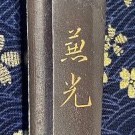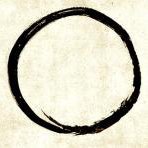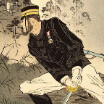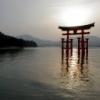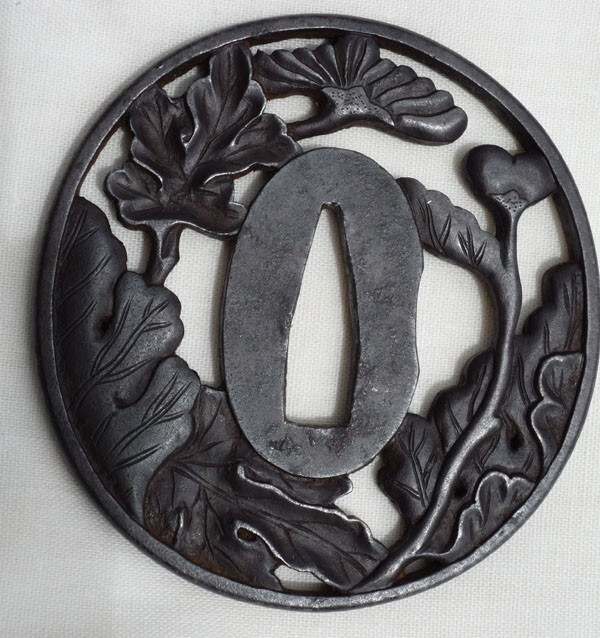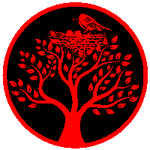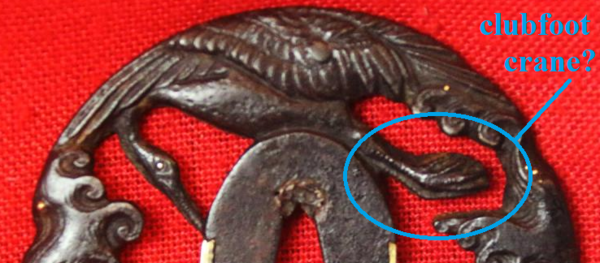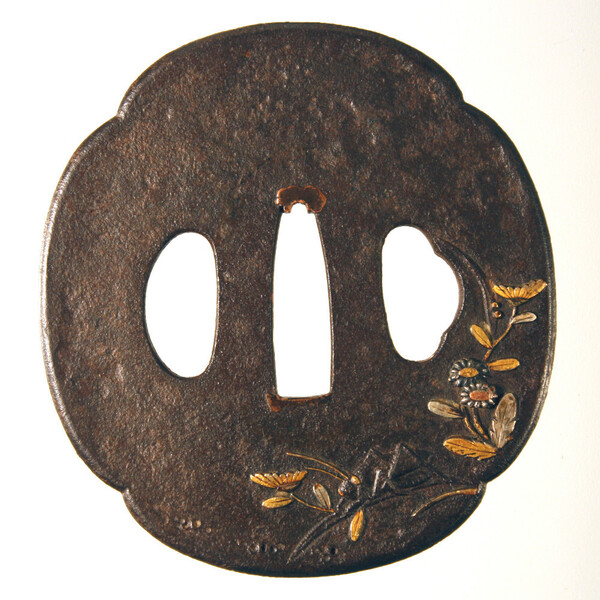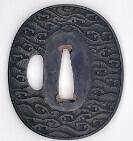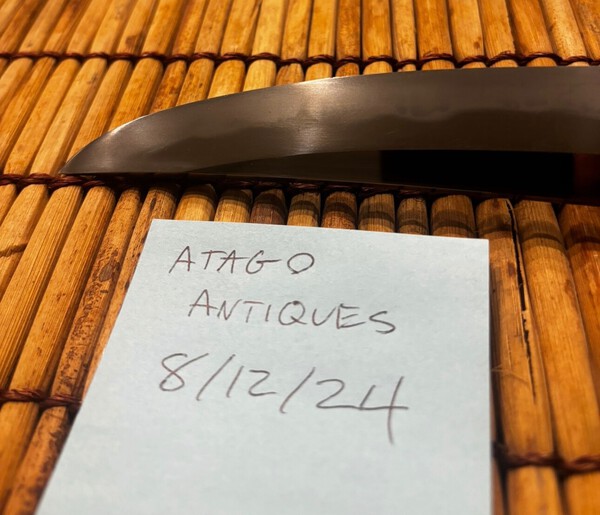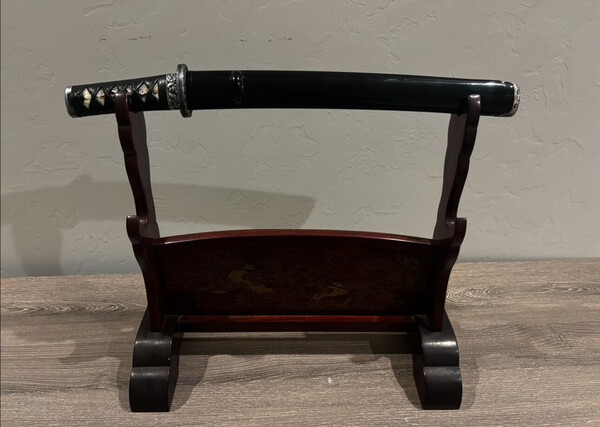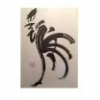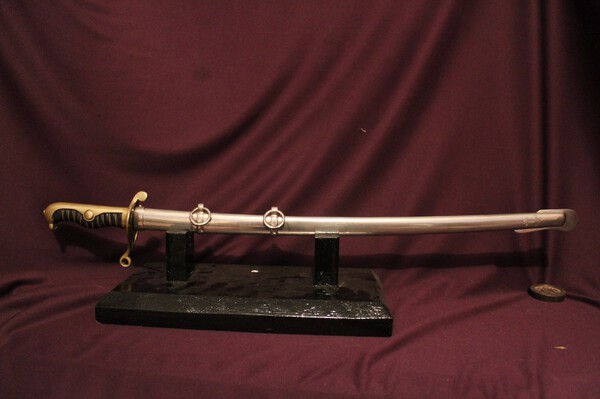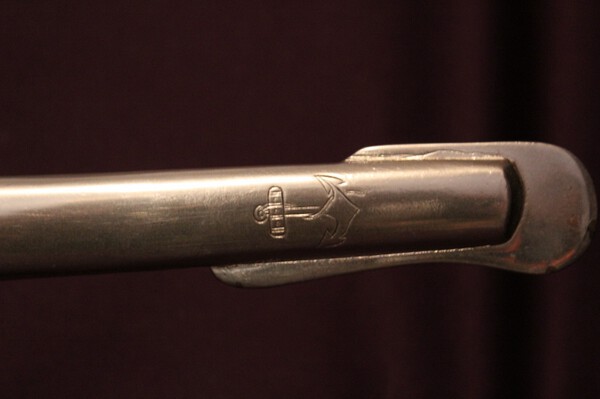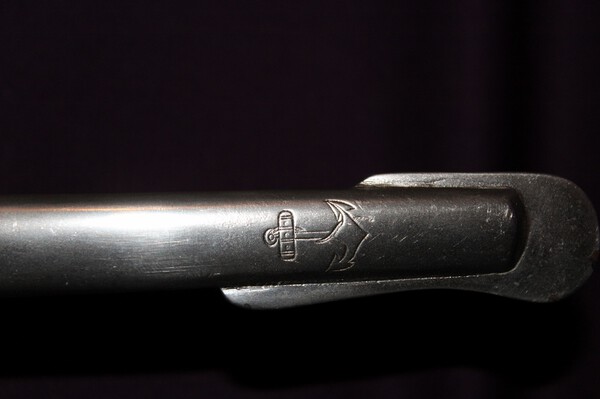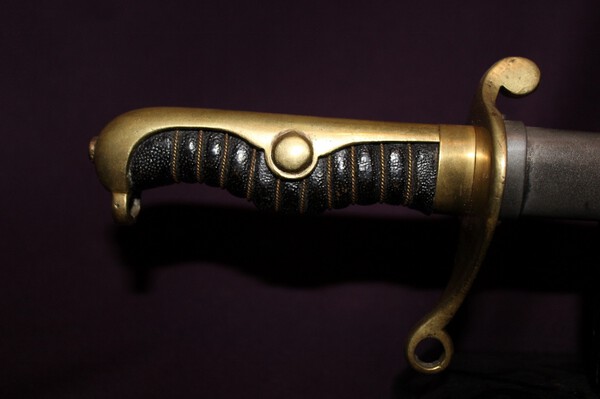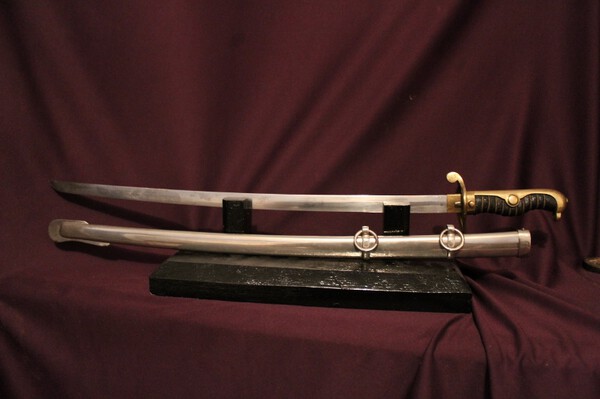Leaderboard
Popular Content
Showing content with the highest reputation on 10/13/2024 in all areas
-
I actually had a USPS person just drop off a daisho at my front door when I wasn't home that was sent via EMS, and faked my "signature" on it. I had to get my neighbor to grab it before anyone took it off my porch.4 points
-
https://www.aoijapan.com/set-of-tosogu:tomei:tsuba-kozuka-fuchi-kashira-menuki-ura-gawara-kurikata-nbthk-juyo-tosogu-65th-millet/ Wonderful set - alas, not for small pockets! Florian4 points
-
Yes, kinzogan-mei were very expensive. If a blade had a Hon'ami kinzogan-mei, especially from an old judge, it was almost certainly the collection of a daimyō (though which family specifically is often lost). And in general you are correct, that kinzogan-mei were only applied to mumei nakago. But there are examples where the Hon'ami applied kinzogan-mei to ubu blades. It is exceptionally rare and all the examples I can think of are from Kōtoku (more on him in a moment). Hon'ami Kōsatsu was in charge of Toyotomi Hideyoshi's sword maintenance. But the appraisal process really seems to have started started with Hon'ami Kōtoku around 1600, which the shōgun granted the Hon'ami family a copper seal to authenticate their origami. This continued through a long and convoluted family structure until the modern day. Old Hon'ami records — kinzogan-mei, origami, etc. — are very, very rarely overturned by the NBTHK. Part of the reason is respect for the old judgements, and part of it is that the old judges had access to original signatures that have long since been lost to us through suriage. Anyways the first five judges are the most important. (The Hon'ami family was around for a long time before this, but this is the important part of the lineage for our discussion here.) 光徳 Kōtoku (1554-1619) has about 10 jūyō, but a mind-blowing 13 jūyō bunkazai 光室 Kōshitsu (1583-1625) and 光温 Kōon (1603-1667) have about 10 jūyō and 2 jūyō bunkazai apiece 光常 Kōjō (1643-1710) has 120 jūyō and 2 jūyō bunkazai 光忠 Kōchū (Hon’ami head 1697-1725) has 200 jūyō and 3 jūyō bunkazai 光勇 Kōyū (1704-1770) has 35 jūyō Kōtoku's judgements are absolutely ironclad. You will almost never see any of his kinzogan-mei on the market, they are priceless. Kōchū and Kōjō are probably #1 and #2 that you will see commercially available, and they are both extremely reputable and legitimate appraisals are almost never overturned. After Kōyū the appraisals start to get weaker... The short version is yes, attributions by later Hon'ami judges are much less reliable than earlier judges. Outright forgery was fairly rare, but inflation of appraisals happened — if you need a Masamune for a gift for the shōgun, but you don't have one or don't want to give yours up, maybe you can pay the Hon'ami fee in advance and get a Shizu re-appraised as a Masamune after "very careful appraisal." Or turn a Naoe Shizu into a Shizu Kaneuji, etc. You do also need to be aware of fake origami. There are quite a few floating around and some of them are very good forgeries. The best ways to tell are a malformed seal stamp on the back, a misshapen kao, or the paper not feeling right. The paper was very tightly controlled and quite consistent, and it has a particular feel to it. The gold (ha) standard reference book on this is Markus Sesko's history of the Hon'ami family, and I would encourage you to buy a copy — it's a great reference.4 points
-
3 points
-
There have been quite a few reports of people using airtags or other GPS tracking systems to lead police on search warrants. https://www.latimes.com/california/story/2024-08-26/apple-airtags-are-helping-cops-catch-thieves-heres-how-you-can-protect-yourself3 points
-
I made the mistake of buying my first sword from there many moons ago, so you can imagine that I have little sympathy for their business model and do whatever I can to deter anyone else from spending money there. With regard to the Japanese stuff, I heard (I think from Peter Yorke who fed them some of his rejects) that most of it came/ comes from bulk buys of low-grade stuff from the art auctions in Japan via an agent. They then tried to match blades with koshirae and sent some blades for an acid polish (a guy called John Bolton used to do them in the UK). The blade I bought was in koshirae that didn't belong to it and the whole thing had a very odd chemical smell to it that (I later reasoned) was due to how it had been "tidied up". Anyhow, you live and learn. I can't imagine that I'm their only dissatisfied customer, but then, if they'd not ripped me and cultivated me as someone new to collecting, they might have made more money from me. That said, they've been around for a long time doing the same thing so a degree of dishonesty clearly pays unfortunately.3 points
-
They've been full of this kind of rubbish since forever. It's always stuff that is short on detail or authentication and long on Samurai fantasy. This does get dangerously close to fraud though so maybe business isn't so good - perhaps they're suffering with import issues too?3 points
-
"Kunzan" is not a Hon'ami, he was Honma Junji-sensei, one of the founders of the NBTHK. He used 薫山, read as Kunzan, as his gō ("artistic name"), which literally means "fragrant mountain." This is a bit of an inside joke — Japanese uses a lot of onomatopoeia, and クンクン kunkun means "to sniff." Honma-sensei supposedly had the habit of sniffing loudly when he was inspecting blades, and one day one of his staff jokingly called him kun-san ("Mister Sniff"), and this was his inspiration for the gō. His successor, Kan'ichi Sato-sensei, used "Kanzan." (I forget the kanji off the top of my head.) Tanobe-sensei, the former head of research at the NBTHK and their student, uses 探⼭, read as Tanzan, which literally means "research mountain." Modern attributions are not really comparable to the old Hon'ami judges. There are strengths and weaknesses of both, a bit like apples and oranges. Honma-sensei's opinions, however, are generally well-regarded. He didn't do very many kinzogan-mei though, I think about ten at jūyō.3 points
-
Update: I checked with the World Renowned leading expert on Type 95s - @Stegel - about this. He says that while we have no documentary or photographic proof, it's his wizened opinion that those blades were pressed or punched out in shape. He owns about 80 of them and their near identical size and shape point to the idea that they were machine punched out in form.3 points
-
Dealers should start using/offering Airtags. The cost is very little and they're extremely accurate. U-Haul started putting them in the cargo vans because theft and re-VINing has gotten out of control and law enforcement simply doesn't have the man power and time to deal with it.3 points
-
3 points
-
Type (Tachi, Katana, Wakizashi, Tanto, Naginata, Other) : Tanto Ubu, Suriage or O-Suriage : Ubu Mei : (Mumei, Signature) : Akamatsu Taro Kanetsugu Papered or not and by whom? : Not Era/Age : Shinsakuto Shirasaya, Koshirae or Bare Blade? : koshirae Nagasa/Blade Length : 32 cm Hamon Type : Kiyomaro Flaws : koiguchi repair Sword Location : United States Will ship to : CONUS Payment Methods Accepted : Price and Currency : $3,000+shipping Other Info and Full Description : Akamatsu Taro Kanetsugu O-Tanto, typical kiyomaro style hamon, silver habaki in modern kosjorae. Slight repair to koiguchi can be seen in photos. Great piece for iai use or collecting of modern smiths. 32 cm nagasa, $3000+shipping. Pm for details2 points
-
2 points
-
2 points
-
I have noticed that they have branched off over recent years, apart from militaria, other stuff like ancient relics, jewelry etc. Some of those write-ups no doubt will raise some eyebrows. As a dealer and descriptions. Wonder if they sell some stuff on commission and just accept descriptions from sellers without doing the research. They are not the only ones that have descriptions that come with lots of questions. Seems to be a tactic for all types of dealers in antique and militaria stuff, though no other comes close, by a long way. The ideal customer needs to be ignorant, and there is no shortage. Its bad though, to sell so confidently with puzzling attributions. Did see an Omori style Fuchi on a sword several years ago and it was far better than this tsuba. Could have been Omori, though it had a fake signature "Teruhide", though it was beautiful and convincing.2 points
-
Yeah, I think a well hidden airtag or similar device is a must have nowadays with any expensive shipment. You can remove the beep noise, and most opportunistic criminals aren't yet looking for them. Wonder how many year it will be before we start seeing airtags as the menuki on swords2 points
-
比総蘓海里長 – (I cannot understand.) 小河原維徳應需造之 – Responding to the order from Ogawara/Ogahara Korenori (reading?), made this. 文政十丁亥年二月日 – Bunsei 10th Hinoto-I year (1827), 2nd month 上杉臣加藤綱俊 – A retainer of Uesugi (clan), Kato Tsunatoshi2 points
-
2 points
-
Well, what is the fuss about ? Before WWII there have been collections of japaneses swords in Berlin. During the war, many houses have been bombed, many swords have been destroyed. So it is no wonder to find such an thing in an cellar filled up with rubble etc. Nobody cared at this time about antqiues. They did have serious problems. Does this Wakizashi has something to do with the gifts presented to the German Emporer by the Japanes, no. Why not take it as what it is. An wakizashi which has been destroyed during the war. All the other is pure speculation and nonsens.2 points
-
@Aegon I understand where you're coming from because I used to have the same idea when I was new to world of Japanese swords. The thrill of testing a sword’s sharpness and putting it to use can be very tempting when you don't fully understand this art. However, the more I studied and learnt, I realized that using old swords isn’t okay, unless you're living in Japan and have no other choice. These swords, crafted by skilled hands in a different time, were passed down through generations, surviving wars, conflicts, and history itself because of the careful and responsible owners that cared for them. When we use an old or antique sword, we unintentionally serve our own desires at the expense of the sword’s lifespan. Each time a blade is sharpened or struck against a target, we diminish its original integrity. In a way, the sword ends up serving our ego, rather than us being humble stewards of its history. By taking care of these swords, rather than using them, we honor the people who crafted and preserved them before us. Their care is the reason we can enjoy these pieces today. I’ve come to appreciate that my role is not be the final destination of the the swords I aquire, but to preserve them so that future generations can experience their beauty and craftsmanship just as we do now. It's not just about ownership, but stewardship and there's something deeply rewarding in that perspective Frankly speaking, with the abundance of affordable reproduction swords available for iaido and tameshigiri it would be plain careless to use anything historical for that purpose. And I wouldn't be proud to tell anyone of it, as it would only highlight my ignorance On another note, I wish you the best of luck with that tsuka and saya project of yours 👍2 points
-
It's amazing how a little 'patina' can get museums so excited, when there are SOOO many examples from the period that are in pristine condition. 'Richly decorated' is stretching it. To spend money on a 'restoration' is a fallacy when the funds could be better spent on some high quality polishes of other blades. I find it hard to imagine what it looked like pre-restoration. Some things are just a lost cause.2 points
-
Hello Frank, You will get more responses if you post this in the Military Swords thread. I see that this paint has age to it, however, this is not the hue of red normally found on period correct pieces. Looks like Bubba painted it in his garage sometime post-war. The traces of red paint on the saya fittings indicate this was not done with care and thus probably not original. See the below link for often encountered period saya colors. Conway http://ohmura-study.net/904.html2 points
-
2 points
-
2 points
-
maybe Yoshimitsu (義光), Shōwa (昭和, 1926-1989), Gifu – „Yoshimitsu“ (義光), civilian name „Yabushita Fujio“ (藪下不二夫) but just my guess.1 point
-
After a short time thinking which tsuba with plants theme I like the best, I resolved to propose some with akikusa - 秋草 - autumn flowers. All are simple, natural sketches from Aizu-Shōami school (just my opinion, none of them has a kanteisho). No masterworks here, but I appreciate the fine work of multicolor inlays. Please have a look at the updated version of Flora Hoplologica Japonica at: https://www.dropbox....0hr&st=n6fo0z5l&dl=01 point
-
I fell in love with these… starting thinking about how I have two kidneys… :D1 point
-
1 point
-
Not only papers….. As though they are not top Soshu smiths… Regarding prices, one can indeed go and check the individual dealers’ websites. Tsuruginoya (Miyoga) san indeed has his prices on his website as does KImura san (Eirakudo) etc.1 point
-
Thank you Ray There are no stamps next to the signature; is that a sign the blade is better quality please? Is the date also August 1943?1 point
-
1 point
-
1 point
-
1 point
-
Namban/Hizen? Squirrels in the grapes. A common theme but not seen very often in namban. Difficult to tell age of namban as very few were signed [if any?] Copper version here from the Ashmolean museum. https://jameelcentre...ction/8/object/21150 I show the ura view, you can find the omote on the link [ura difficult to find] More here: ebay examples. https://www.ebay.com.au/itm/326301595412 - perhaps a more detailed example. https://www.ebay.com.au/itm/386828822403 - nice but expensive! https://www.ebay.com.au/itm/405270717744 coiled wire vines. https://www.ebay.com.au/itm/156433822740 an obvious fake with fake mei. Others : https://www.seiyudo.com/tu-020517.htm https://www.touken-w...rd-guard/art0002319/1 point
-
No need to remove anything. It's clearly a tourist trinket from the Philippines. Use it to open letters. Will ruin your keyboard if you use it to open emails.1 point
-
1 point
-
@Bruce Pennington Thank you for sharing! This is probably as close to a fact as we can get on this matter1 point
-
AOI Art included them in my two most recent EMS shipments from them. Thankfully, we did not need to track them. Including an Airtag is a good idea, especially if a sword’s value exceeds the EMS insurance limit.1 point
-
We can say for sure it wasn't a factory paint job. You can see red splotches on the brass parts where the guy that did the job got a tad sloppy. You won't see that on a factory paint job. Now, whether it was wartime bubba or post-war bubba - who knows! I have 3 NCO's that I thought were post-war bubba-jobs, and stripped them. Now, after some further discussions and seeing others pop up, I realize that 2 of them were wartime paint done in the field. I can say I've never seen one that color red before.1 point
-
Just curious if there is a similar address on a parallel street where you live? I have had packages delivered to a house with the same house numbers one street over from ours on several occasions. Fortunately, those folks are honest. But I certainly would not put it past a crooked USPS employee either. I would also contact the postal inspector and file a report. John C.1 point
-
It also might get flagged if the thief sells it to a Pawn Shop if you have a police report.1 point
-
I think maybe someone from the Museum has led a rather sheltered life on the subject, judging from statements like this. "Who could have imagined that at a time when Japan was isolated and hardly any European travelers came to the country, such a long-used and richly decorated weapon would end up here in Berlin?" Matthias Wemhoff, state archaeologist of Berlin and director of the Museum of Prehistory and Early History, said in the statement.1 point
-
I also hate the term “machine made.” It gets carelessly thrown around on places like Reddit when people ask for gunto IDs. IMO the only Japanese WWII blades that can accurately be called “machine made” are Type 95s, zoheito, and possibly the navy stainless blades (I’ve never been able to find good info on how these were actually made). Typical officer showato were “hand” forged to shape from bar stock by smiths using power hammers. Every blade is slightly different, and sayas and fittings do not freely interchange. They’re non-traditional because they aren’t made of tamahagane or orishigane and are oil quenched. Not because they’re not “hand forged”. Gendai smiths used power hammers too. If the use of power hammers makes a sword “machine made,” then most gendaito are “machine made.”1 point
-
1 point
-
1 point
-
1 point
-
With or without a rim. [This one reminds me of a WWI sea mine ]1 point
-
Here's another Buddhist motif of a temple bell (bonsho) seen most commonly in Kanayama tsuba and less commonly in Owari tsuba. The latter is being offered on Jauce at the moment, but I am looking for a more lively Kanayama from the Momoyama Period. This one is a bit too stiff with less of the Wabi Tea aesthetic. Still tempting nonetheless. There is a great section on the slight variations of this motif in Owari To Mikawa No Tanko. Having 5 nipples and a waist is the prototypical design.1 point
-
Personally to me both handles and fuchi appear to be genuine, the one Chris showed seems to have been buffed removing the definition of the dimples. Neither has the punch marked dimples which are telltale fake, just my opinion.1 point
-
1 point
This leaderboard is set to Johannesburg/GMT+02:00


